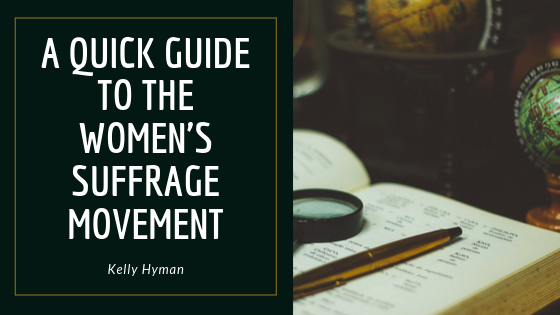What was the Women’s Suffrage movement?
On the 19th and 20th of July 1848, the Seneca Falls Convention, originally known as the Woman’s Rights Convention, commenced. While this convention was not the first meeting of its kind, it is the meeting that is attributed to launching the Women’s Suffrage movement. One of the primary testaments to rise from this assembly was The Declaration of Sentiments. The Declaration of Sentiments was a manifesto written by women’s rights organizer Elizabeth Cady Stanton describing women’s grievances and demands. The manifesto called upon women to fight for their Constitutionally promised right to equality as U.S. citizens.
Over the next 50 years, supporters and organizers from this convention would work to demand exactly that, lobbying, petitioning, and educating the public on the validity of woman’s suffrage, or the right for a woman to vote.
When was the Women’s Suffrage movement?
While suffragists had been working and organizing for years prior to the Seneca Falls Convention, the 1848 assembly is attributed as its official beginning. The battle for voting rights was a fight that spanned decades. Some would argue that the plight ended on August 18th, 1920, when President Woodrow Wilson ratified the Nineteenth amendment. This is only partially true, as this amendment did not include Indigenous peoples nor did it include Asian Americans. Moreover, discriminatory practices meant to deter and intimidate people of color away from the voting polls would persist for years.
In 1924, the Indian Citizenship Act was passed, granting (in theory) all Native Americans full citizenship and the right to vote. Many states continued discriminatory practices meant to disenfranchise them at the polls. In 1952, the McCarran-Walter Act was passed, granting Asian-Americans the right to citizenship and voting. It wasn’t until 1965 that the Voting Rights Act was passed, lawfully removing the barriers meant to infringe upon the voting rights of POC.
Who were some of the key players in the Women’s Suffrage movement?
The Women’s Suffrage movement was comprised of many vocal activists including Sojourner Truth, Elizabeth Cady Stanton, Martha Coffin Wright, Frederick Douglass, Jane Hunt, Lucretia Mott, and Susan B. Anthony. The Women’s Suffrage movement was closely intertwined with abolitionism. Martha Coffin Wright, a lifelong defender of women’s rights, for example, ran a station along the Underground Railroad.

